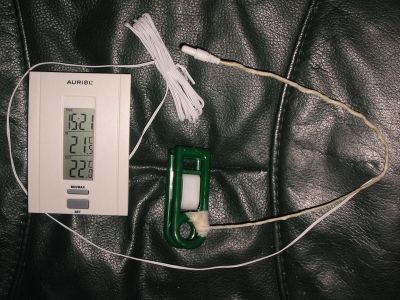Case airflow and cooling is not hard to do but can be time consuming.
Setting up the case for optimum cooling is often the hardest and most time consuming part of a build... And often the most neglected.
- There is much more to cooling than good cases and good CPU / GPU coolers. Add the fact that many GPU's make more heat than CPU means getting that heat out of the case and keeping a cool airflow to components can be a challenge.
- There must be more air flowing through case than component fans are using. If the CPU cooler uses 70cfm and GPU uses 80cfm fans we need 180-220cfm.
- Cases, especially those with filters, usually benefit from fans with higher static pressure ratings than stock fans... "cooler" fans instead of "case" fans.
Intakes are typically have more restricted than exhaust because of air filters, more restrictive grills, HDD cages, etc.
- I prefer more intake than exhaust. And don't confuse number of fans with amount of airflow... or airflow with airblow
- airflow is flowing cool air from intake to component and flowing hot air from component out of case without the hot air mixing with the cool air.
- airblow is lots of fans blowing air with some of hot air from components mixing with cool air making it warmer resulting in warm air not cooling components as well as the cool air will.
- Putting fans in case as intake and/or exhaust is only the first step. These fans only move air in and out of case.
- This does not mean heated air is not mixing with cool air.
- Nor does it mean cool air is going to where it is needed.
- Getting the air to flow inside of case properly is even more important. We still need to manage where the air flows inside the case. We can do this several ways; deflectors, more intake fans.. & exhaust fans, removing PCI slot covers, removing vent grills, removing HDD cage, using fans with higher pressure/airflow, building ducts to or from CPU/GPU cooler, etc.
- Using a remote temperature sensor to monitor what air temps are is the key to finding out where the cool air is flowing and knowing heated air is not mixing into it. By monitoring this we can than make changes to get airflow the way we want it.
How to monitor air temperature different places inside of case:
- A cheap indoor/outdoor thermometer with a piece of insulated wire and a plastic clothspin works great.
- Made up with floral wire and tape. We don't want anything to short out with metal.

- Clip and position sensor where I want to check the temp. Make it easy to see what the air temp going into components actually is relative to room temp.

- When system is working air temps going into coolers will be 2-3c warmer than room.. up to about 5c is okay.








